6 Steps To Grafting Fruit Trees
February 12, 2022In nature, two closely related plants growing nearby can graft together. It does happen. By giving nature a gentle nudge and doing your own grafting, you can harvest different fruit from the same tree. All you need are a few tools, some grafting supplies, and these easy-to-follow steps.
Why Grafting Works
Grafting is a technique that combines one plant part with another. By carefully inserting a stem of one plant into another that is rooted in the ground, you can often get new fruit in just two years or less. Oregon State University, along with Washington State University and the University of Idaho has a free publication titled Propagation of Plants by Grafting and Budding. In it, you’ll find information about how to graft specific plants and trees in your part of the northwest.
Below, we’re going to walk through the process of switch grafting a fruit tree. Other grafting methods include whip or slice, side, bud, bark, and bridge. More about those methods can be found here.
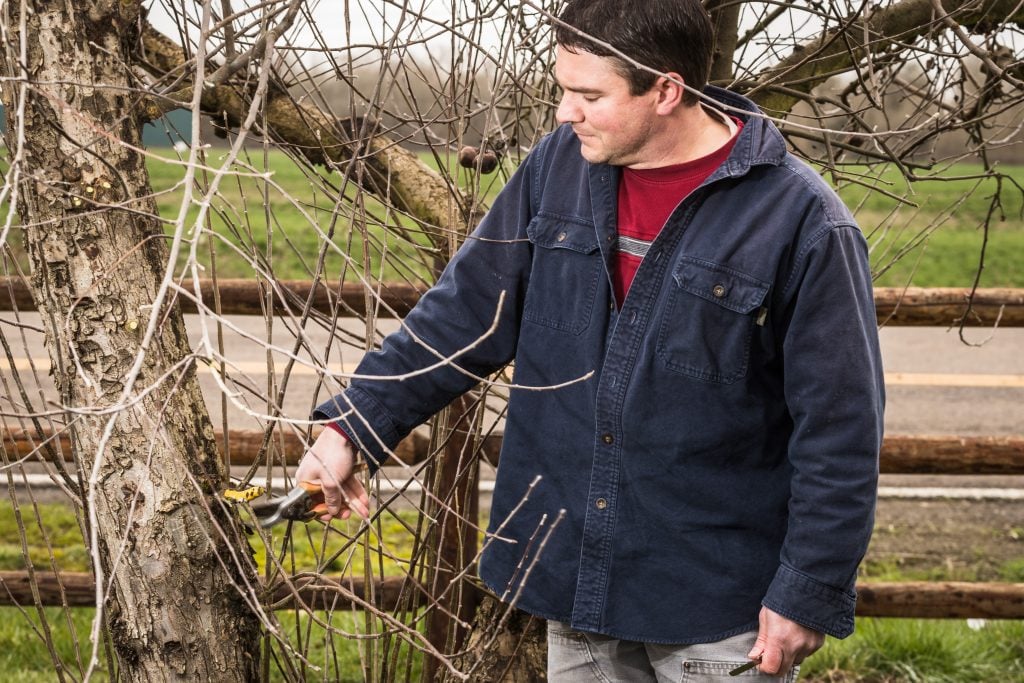
Know Your Grafting Vocabulary
There are a few terms to know before grafting any of your trees.
Scion: the branch or stem taken from one tree or plant to be grafted with another.
Rootstock: the plant with the root system that will feed the scion.
Cambium: the layer of cells in a stem that increase the stem diameter and encourage growth.
Callus: the mass of cells that are created from the cambium. When grafting, the callus grows over the wound and unites the plant parts.
Timing is Essential
The first step in grafting is to get a scion (branch cutting) while the tree is still dormant. This means taking a cutting before the buds start to swell. If you miss this window, you’ll need to wait until next year. Once you get a cutting, place it in a freezer zip-lock bag and store it in the refrigerator. When you’re ready to graft your scion with the rootstock, transport it in a cooler to keep it cold.
For grafting to work, the rootstock must be just starting to bloom. Of course, plants and trees leaf out at different times depending on elevation and where you are in the Pacific Northwest.
Step-by-Step Process
The tools you’ll need are a pair of sheers, a saw, grafting tape, a sharp knife, graft sealing compound, and grafting wax. They’ll find them at your nearby Coastal, along with other yard and garden tools.
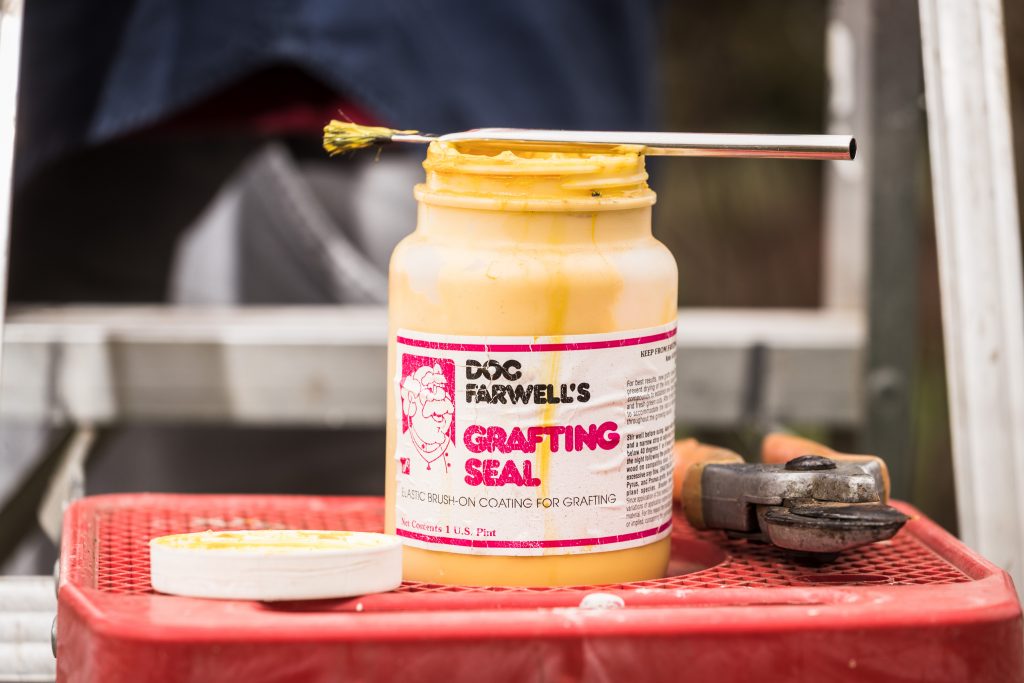
1. Prune the rootstock. Make sure your cut is clean with no tears.
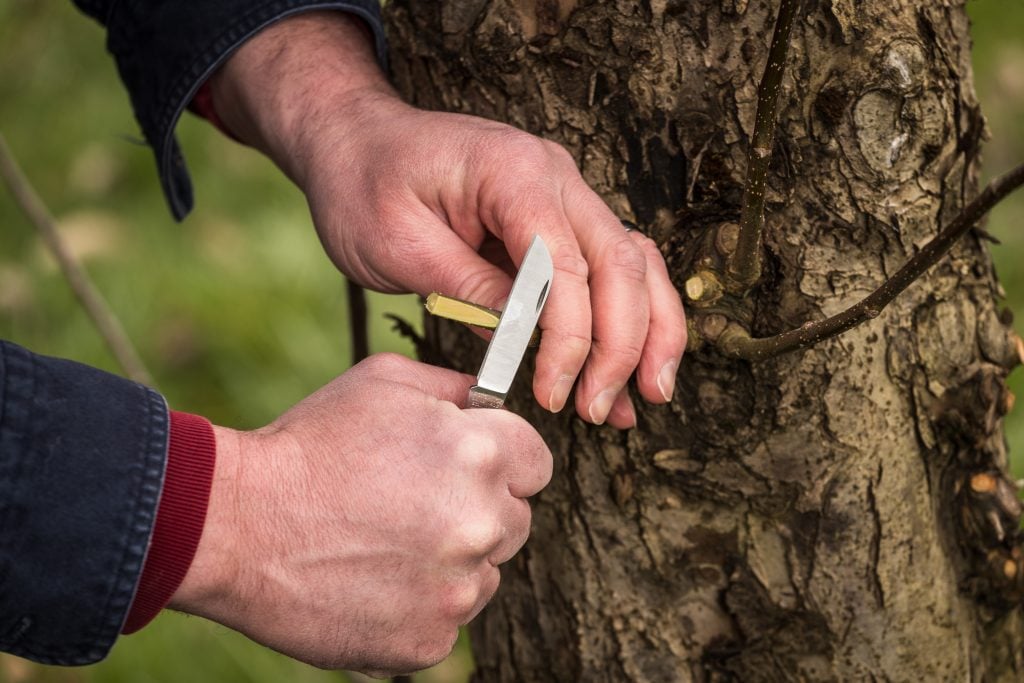
2. Trim the lower and upper end of your scion. It’s best to cut at least an inch off both ends. Be sure you are leaving at least three buds on the branch.
Coastal tip: When cutting, hold your wrist in-line with your arm & pull back the knife quickly while keeping your whole arm & wrist straight. This will give you a level cut, allowing for better grafting.
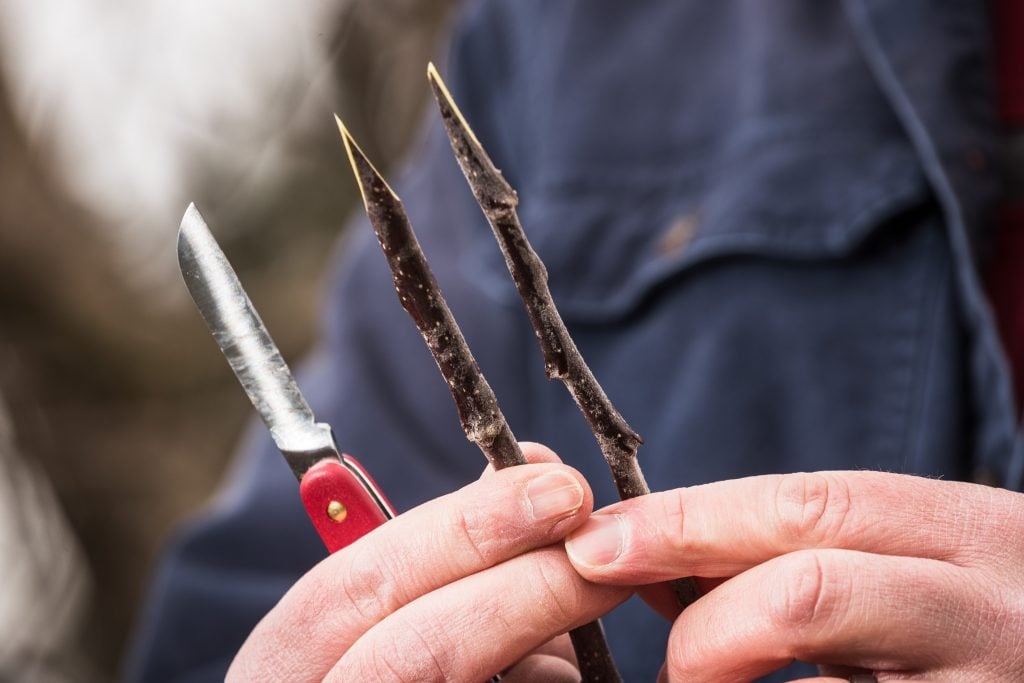
3. Cut a wedge into the bottom of your scion. You may need to cut both sides if you plan to insert the scion into the rootstock. In our example, we’ve cut equal wedges on both the scion and rootstock.
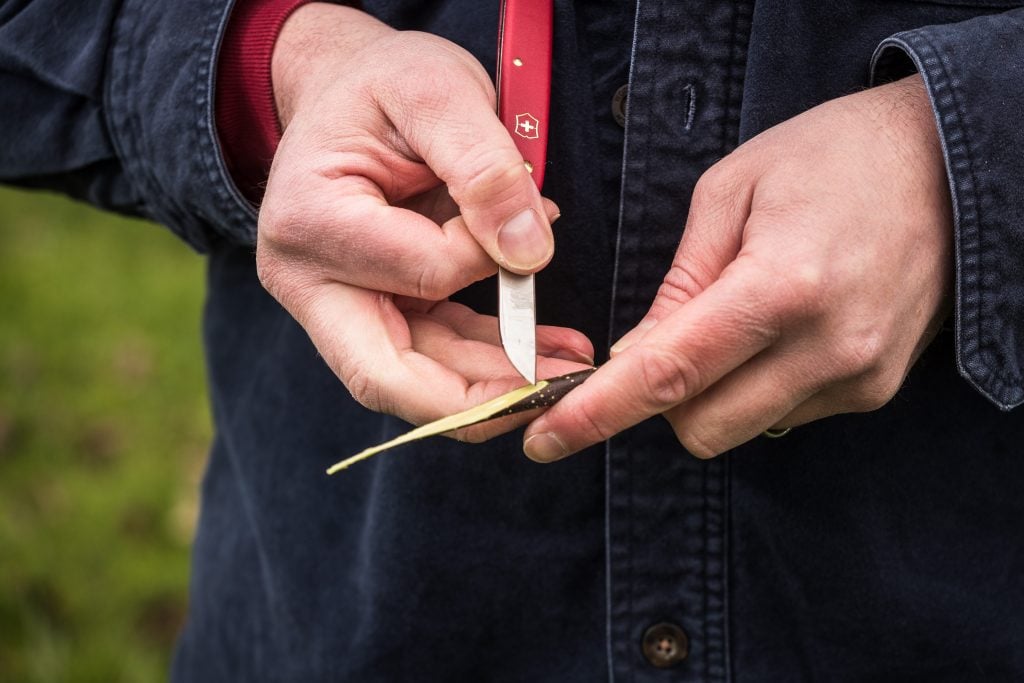
4. Carefully line-up the wedge of the scion with the rootstock. If your rootstock branch is larger than the scion, simply cut into the center of the rootstock branch, making sure the cut is slightly deeper than the length of the wedge on your scion. Then, insert the scion (with wedges cut into both sides, into the larger rootstock branch).

Coastal tip: The cambium of the rootstock and scion will need to be in close contact to form a successful graft.
5. Seal up the graft. You’ll want to use grafting tape to hold the scion in place, as well as graft sealing compound. The goal is to protect the graft from sunlight and exposure while it heals.
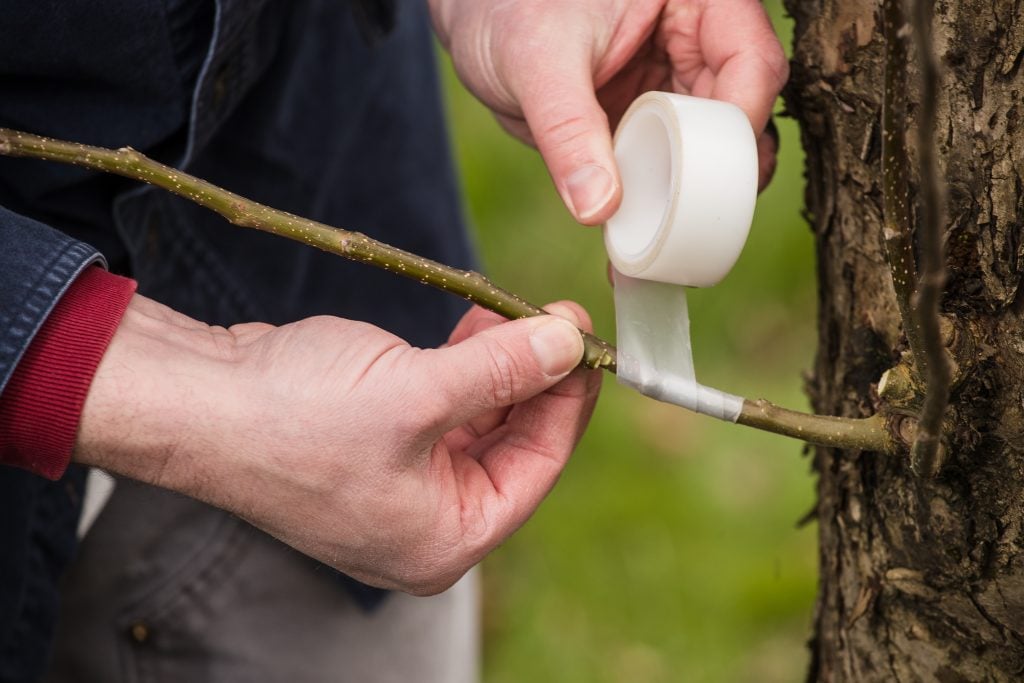
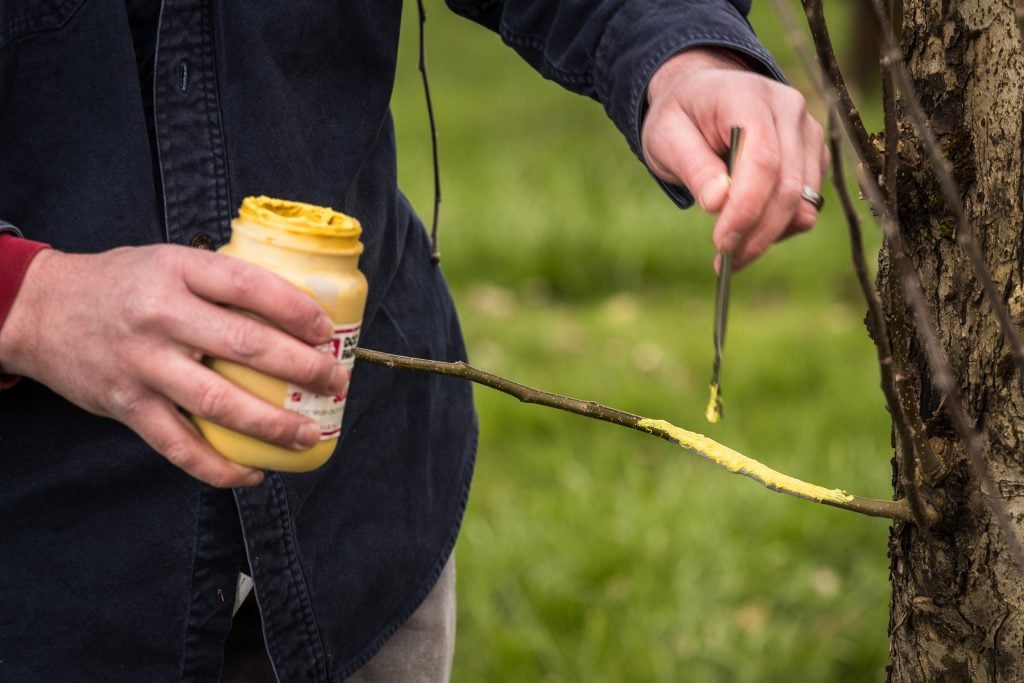
6. Add some grafting wax or sealing compound to the end of the scion to protect it from drying out. Allow your new graft to heal.
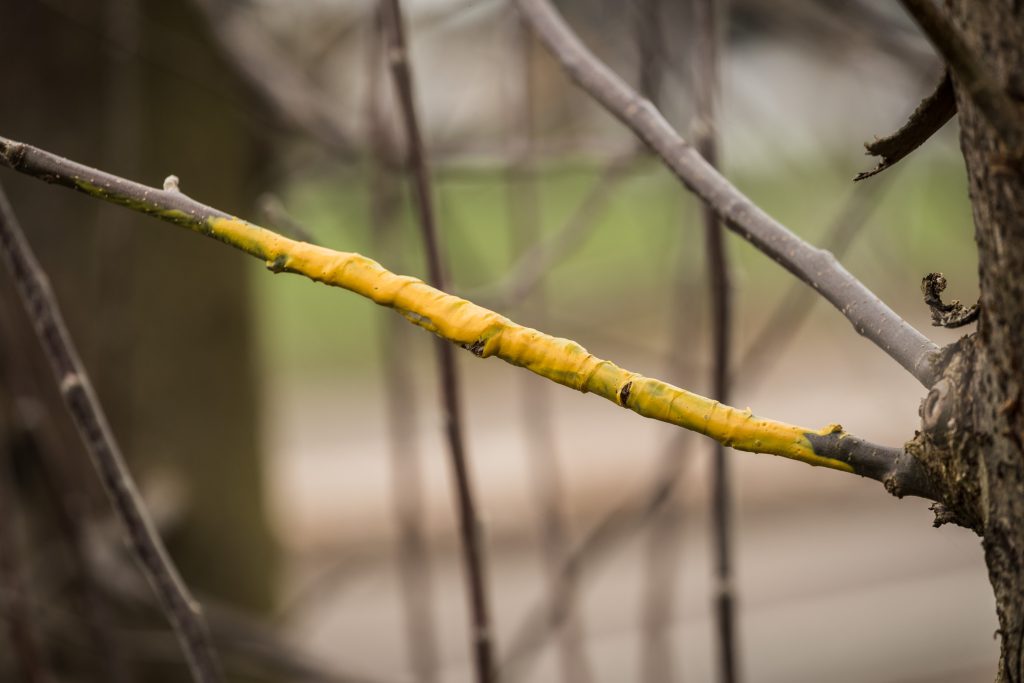
Grafting Takes Time
You might see some healing in a few weeks as the callus grows over the graft. As long as the graft is successful, you should see new fruit in just a few years.
Coastal Has Your Yard and Garden Supplies
You’ll find everything you need for your yard, garden, flower beds, and trees at your West Coast-owned and operated Coastal. That includes grafting tools, tape, wax, and compounds.
